Araneae
All together 52 of the samples contained spiders. They were sorted and stored in the -20F freezer. Tracy Audicio then sorted them to family.
There was one large, brightly colored species collected in the genus Macracantha. It has a bright yellow abdomen with scattered black spots. The underside of the abdomen is black with scattered, small, bright yellow spots with two reddish brown eye spots laterally and a pair of small spines medially towards the end of the abdomen. However, what stands out the most are two enormous extensions of the abdomen laterally becoming slightly expanded and covered with hairs at the tips.
Blattodea
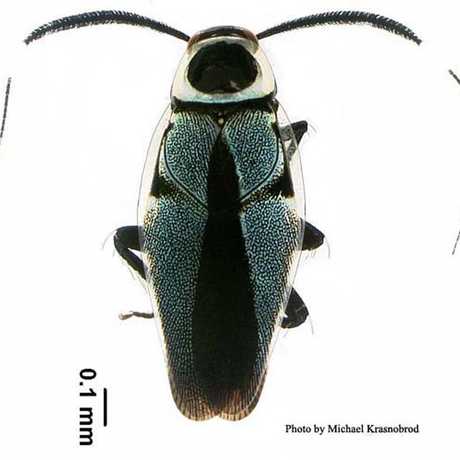
Most people are familiar with the common cockroaches found around the home and can often be found throughout the world. Less well known is the fact that most roaches are found on the forest floor and even up on the forest vegetation. They are not all drab brown. Some can be pale green. One species encountered in the Philippines had a blue tint to the wing covers.
Chilopoda
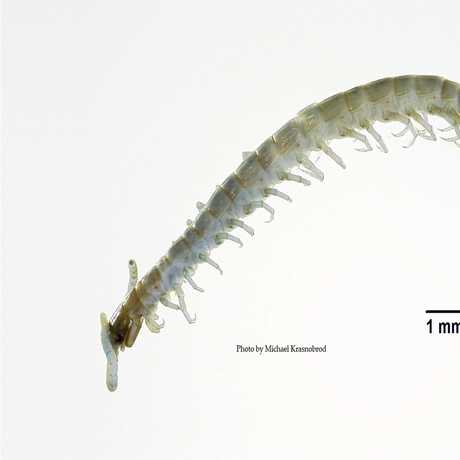
Centipedes are predatory arthropods that roam the forest floor capturing and killing their prey with the first pair of legs that are modified as poison fangs. Some species in the genus Scolopendra can attain the size of small snakes. We found that some of the Philippine centipedes are blue, but quickly lose that blue pigment after death.
Coleoptera
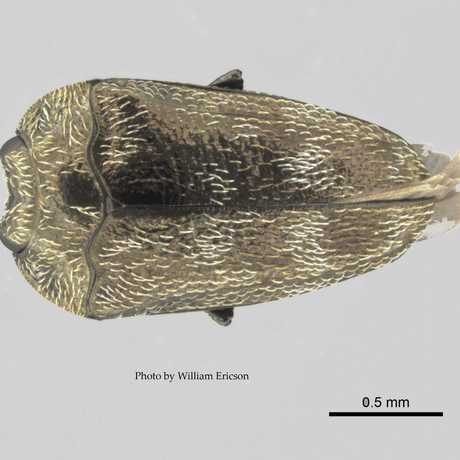
There were five specimens of Buprestidae collected on this expedition. There is one specimen that is short, broad, black, with abundant short, white hairs all over the dorsal surface of the body, shown here. The head appears to be retracted under the thorax and cannot be seen from above. According to William, this is the genus Habroboma, or one of the closely related genera.
Collembola
There was a wide variety of collembolans (springtails) collected on this expedition. Some had the short, rounded shape of Hypogastruridae. Others were larger, with longer antennae and furcula, such as Isotomidae. Still others had the compact, rounded shape of Sminthuridae.
Dermaptera
Earwigs are quite common on the forest floor of the Philippines and some of them can have quite long sclerotized cerci. One species that we noted had long dark cerci, but the tips of the cerci are white and almost invisible.
Diptera
Amongst the specimens of true flies collected in the Philippines were specimens with some strange characteristics. For instance, there are representatives of two families with wingless forms. There is one species with bulbous structures on the top of the head with ocelli on the top of the bulbs.
Hemiptera: Homoptera
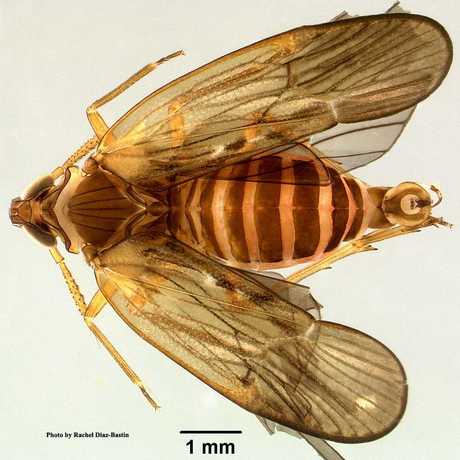
Members of the family Delphacidae are usually among the smallest of Fulgoramorpha, but there are 1403 species known worldwide (Asche, 1985). One of the tribes within this small subfamily is the Ugyopini.
Hemiptera: Heteroptera
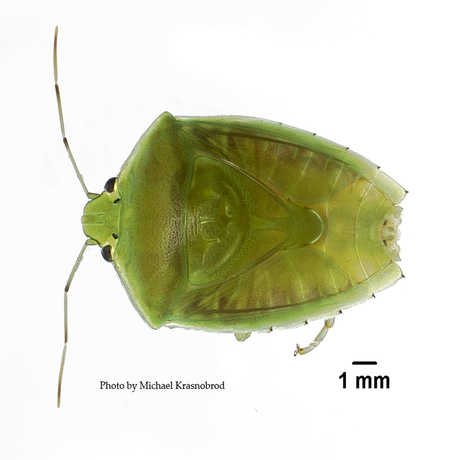
Hymenoptera
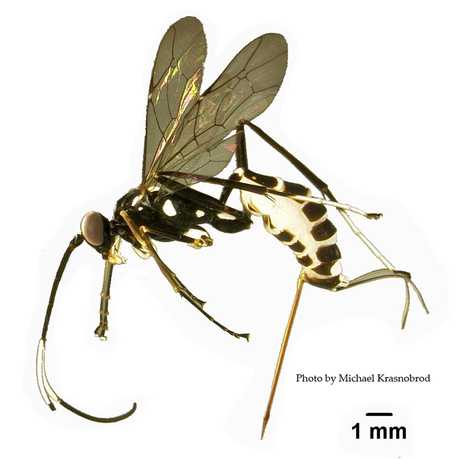
There was a diverse assemblage of families and superfamilies of Hymenoptera collected during this expedition. Robert Zuparko identified the following: Ceraphronoidea, Evaniidae, Ichneumonidae, Braconidae, Mymaridae, Eulophidae, Encyrtidae, Eupelmidae, Agaonidae, Pteromalidae, Eucharitidae, Chalcididae, Cynipoidea, Proctotrupoidea, Scelionidae, Bethylidae, Crabronidae, Sphecidae, Apoidea, Tiphiidae, Mutillidae, Pompilidae, Scoliidae, Vespidae, and Formicidae.
There are thousands of beneficial insects that feed on or parasitize other insects. Here is one of the images of a ichneumon wasps collected on the expedition.
Mecoptera
One of the more interesting biogeographical questions about the arthropod fauna of The Philippines is the question of whether Mecoptera exist in these islands. There are no confirmed records of Mecoptera being collected here. However, the family Panorpidae (scorpionflies) is a Northern Hemisphere family that is commonly encountered throughout Taiwan about 380 kilometers (235 miles) to the north of the coast of Luzon. Other species of scorpionflies are found on Mount Kinabalu along the north coast of Borneo, only 267 kilometers (163 miles) from the coast of Palawan.
Another family, the Bittacidae or hangingflies, is a cosmopolitan family found throughout Australia, southern Asia, and Taiwan. However, this family is not known from New Guinea, Borneo, other parts of Indonesia, nor The Philippines. If this family has never been found in the intervening areas between Taiwan, Asia, and Australia in the geological past, how did the family get from one region to the other?
Neuroptera
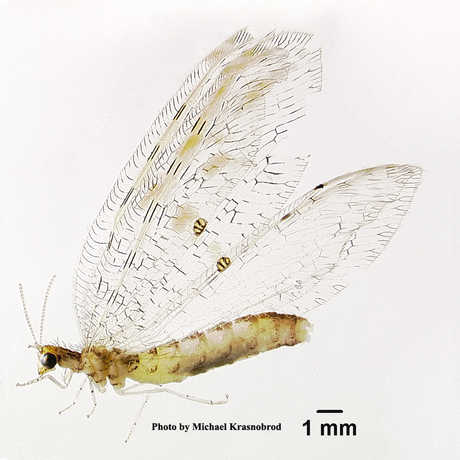
There were six specimens of Neuroptera collected, in five families: Berthothidae, Coniopterygidae, Hemerobiiidae, Myrmeleontidae, and Osmylidae. The irony is that the most abundant and most specious family, Chrysopidae, was not encountered.
One specimen of Spilosmylus was collected. This is a widespread genus in the Old World tropics with 97 described species ranging from continental Africa to Asia, Papua New Guinea, and northern Australia, and it is badly in need of revision with much probable synonymy. In New’s (1991) revision of the Oriental Osmylidae, he includes 14 species of Spilosmylus, six of them from The Philippines. The collected specimen has a glazed bulla at the hind margin of the forewing. There are several described species with this structure. One of the species, S. inquinatus, has been collected on Mt. Makiling, only a few miles from where the CAS specimen was collected. However, the description of S. tuberculatus also fits the CAS specimen and is widespread throughout eastern Asia. It was described by Walker in 1853 and would have priority if these species were synonymized.
Odonata
One of the many colorful damselflies found on Luzon.
Orthoptera
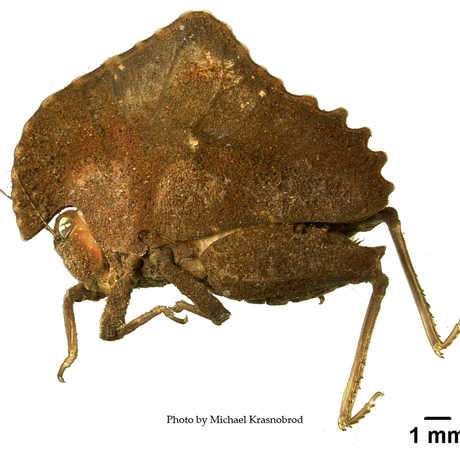
Thysanoptera
There are many different kinds of thrips in the forests and cultivated fields. They have wings that often resemble feathers. These insects are frequently overlooked because of their small size. However, they can often suck the sap from plants, significantly weakening them, and some thrips are actually predatory and beneficial, feeding on other thrips. Here are three of the species seen in The Philippines.